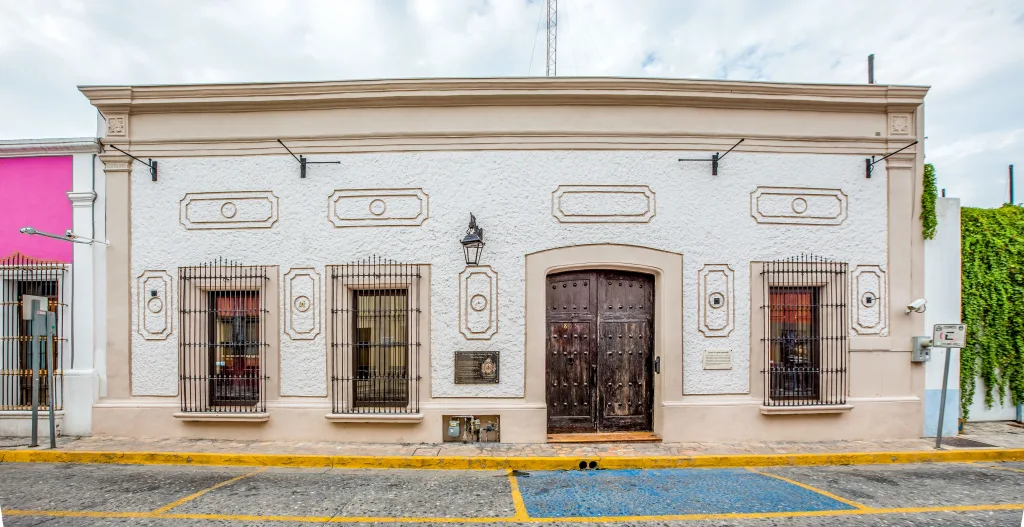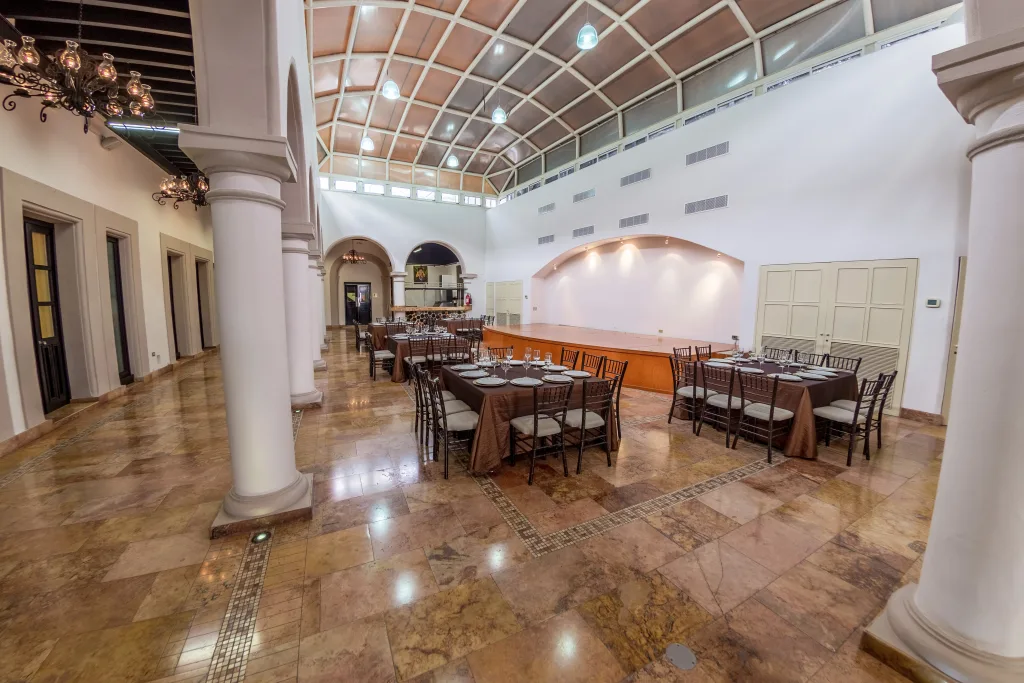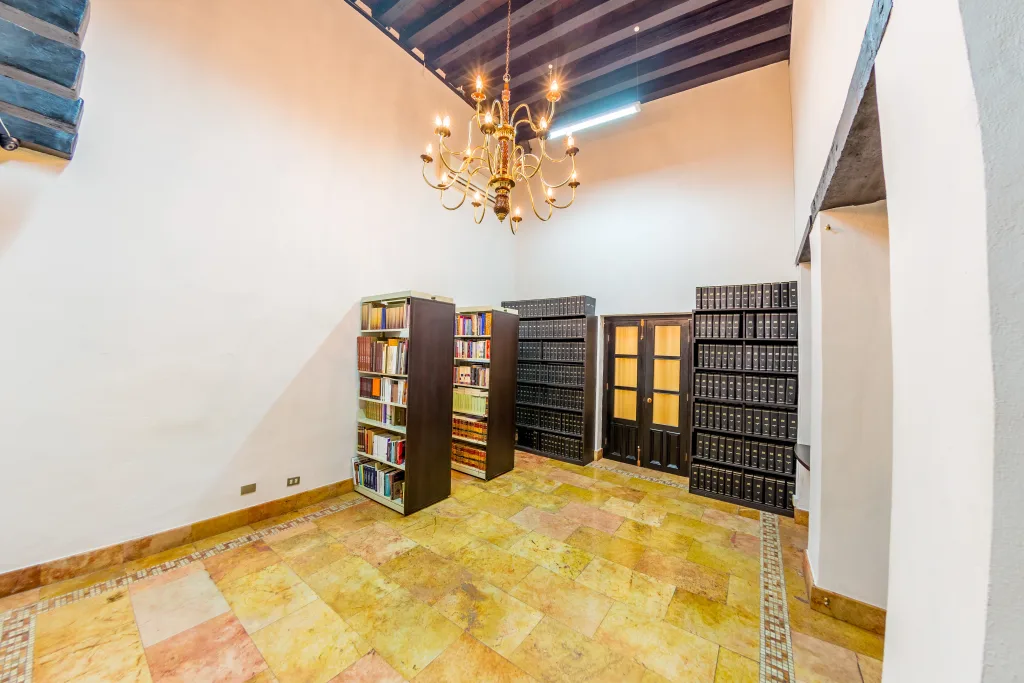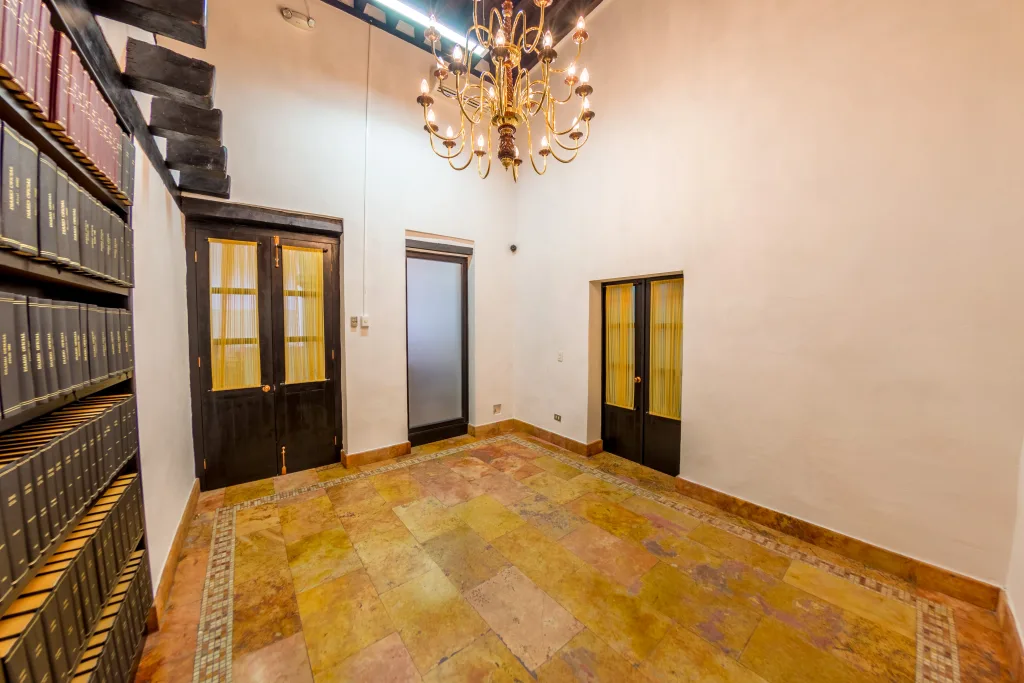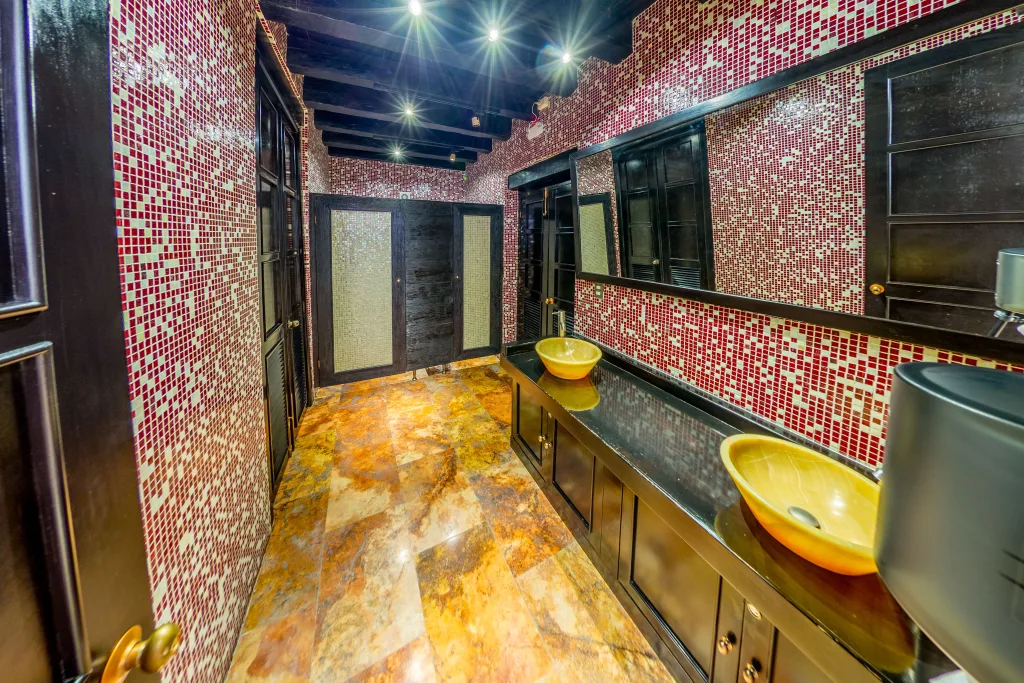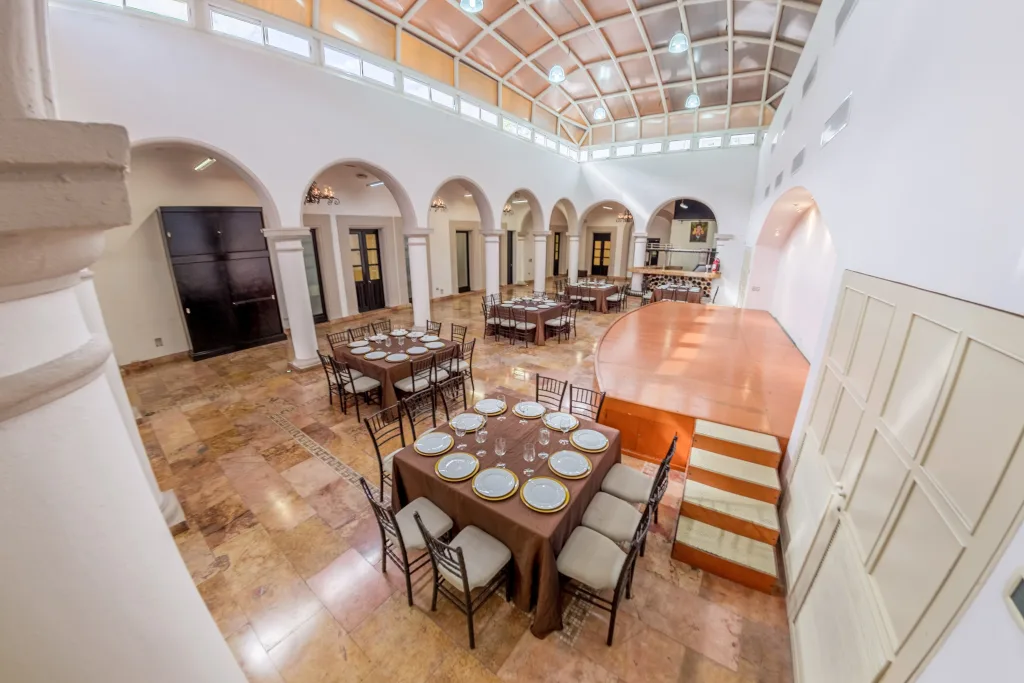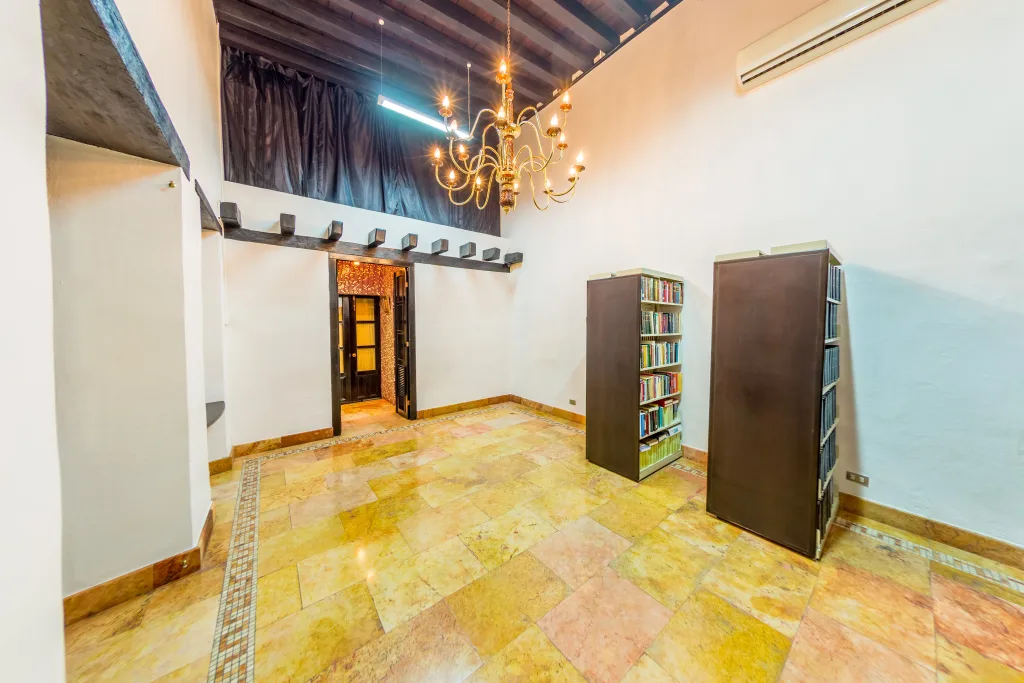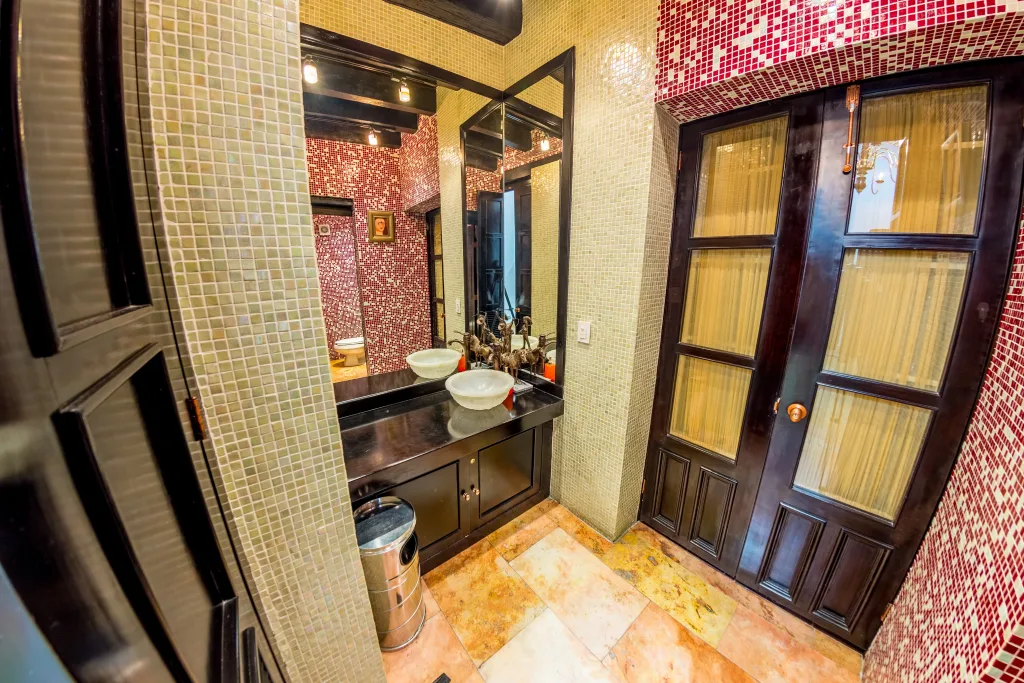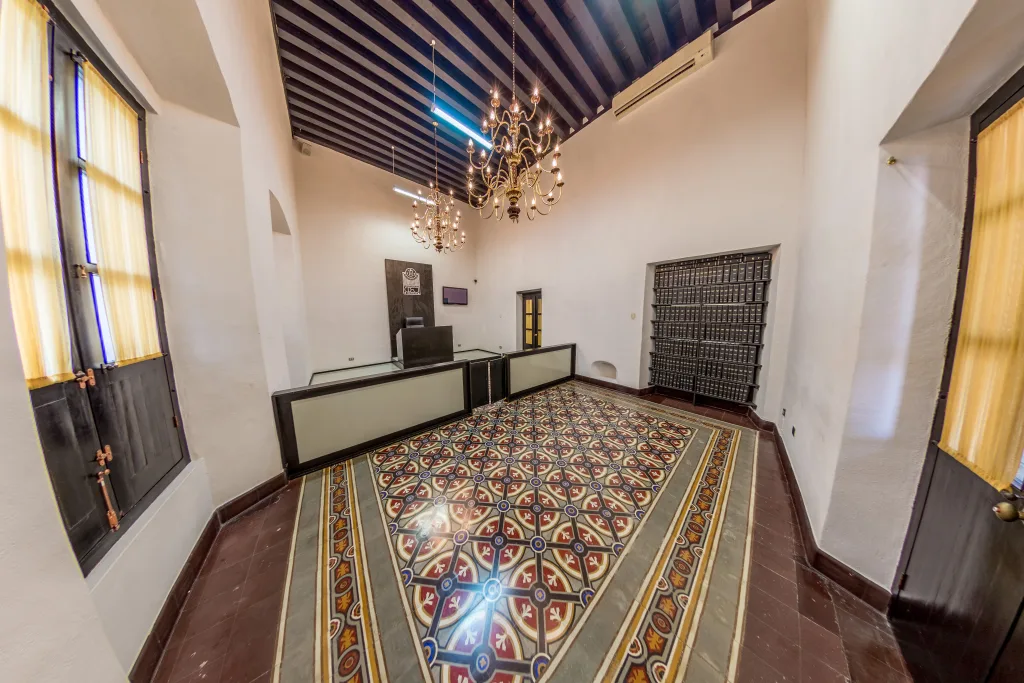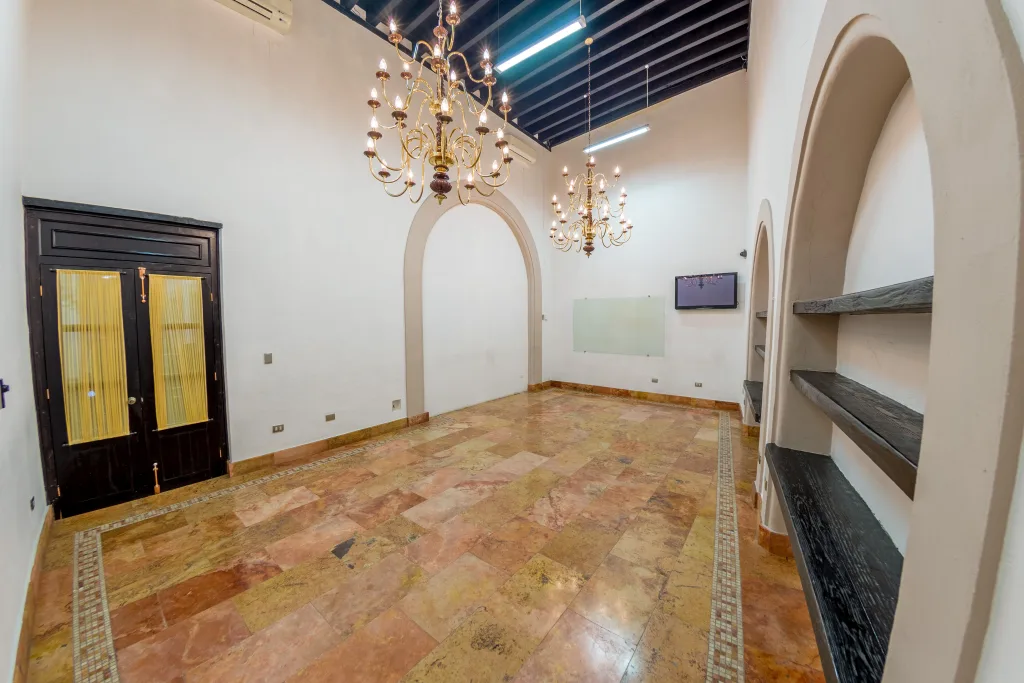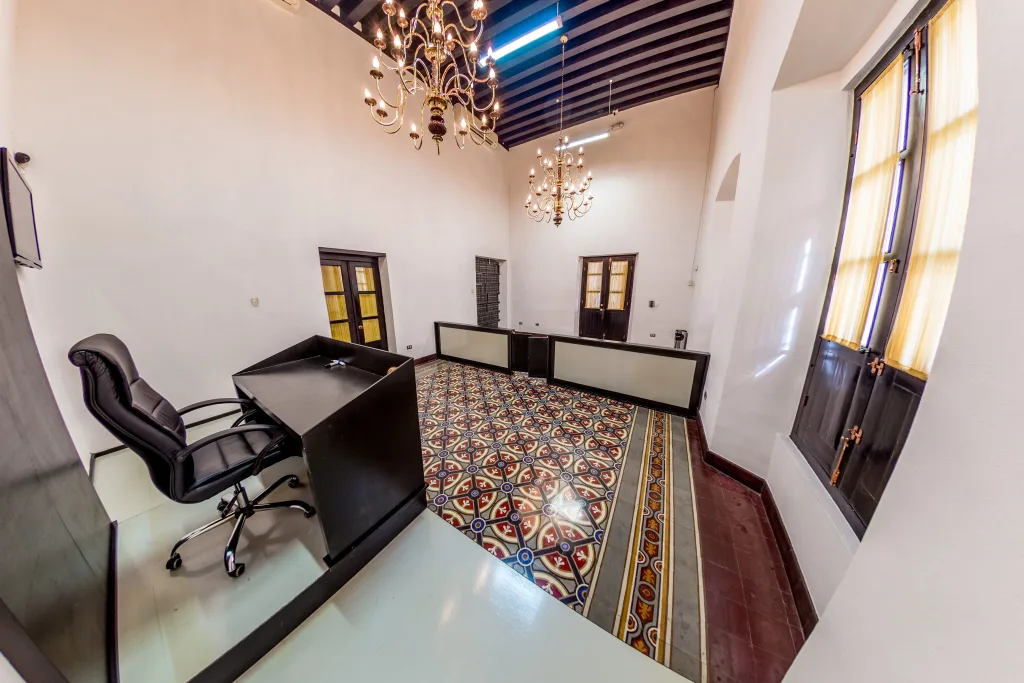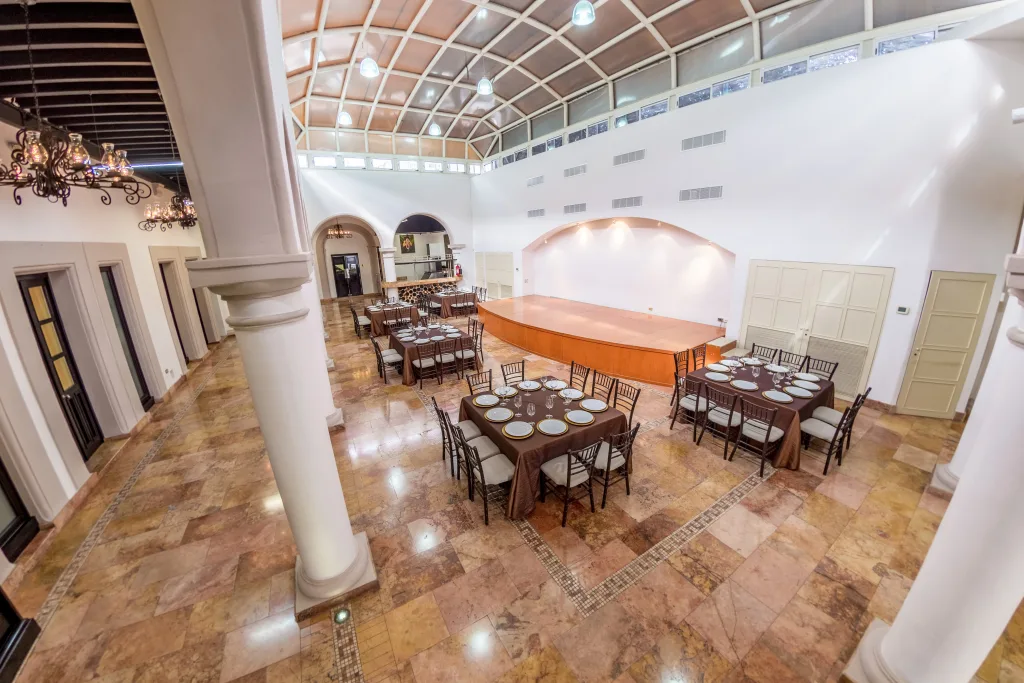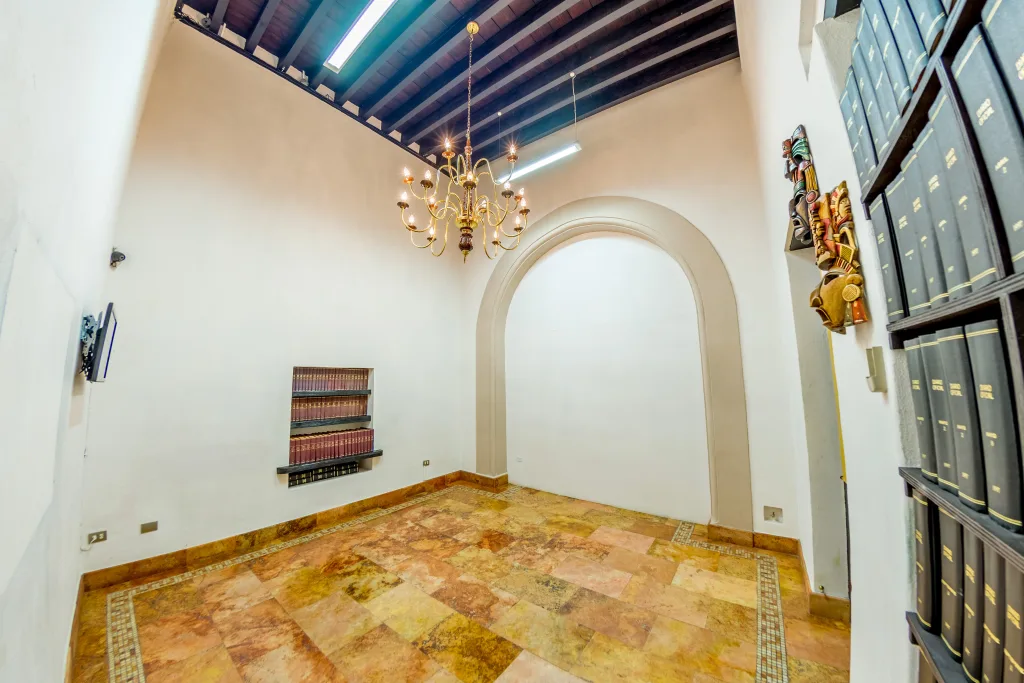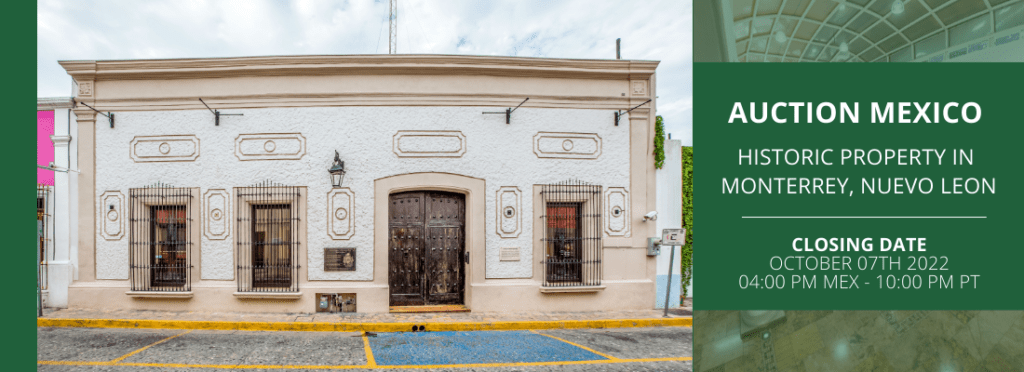Auction of Historic Property in Monterrey, Nuevo Leon, Mexico
Status of the auction: CLOSED
Informations of the auction:
Closing date of the auction:
October 7, 2022 at 04:00 PM, Mexico City GMT-6 (10:00 PM, Portugal)
Informations of the item:
Historic Property Cataloged by INAH, located at:
Street: Padre Raymundo Jardón
Number: 855 Oriente
Subdivision: Centro Barrio Antiguo
City: Monterrey
Zip Code: 64000
Nuevo Leon, Mexico.
Base bidding amount: 1,457,356.72 euros
If you wish to participate in the auction of this property, you must pre-register on the following page PRE-REGISTRATION OF REAL ESTATE AUCTION and send the requested documents to validate your registration and proceed with your guarantee.
Property Description:
Historic and ancient building with a simple classical design of Norse architecture with extensive intangible historical memory that inside has 13 columns. 12 arches built in homage to St Francis of Assisi.
Its distribution consists of an entrance hall which is accessed from the street through a two-leaf gate in restored original solid mesquite wood from the 18th century.
It has a chandelier made of worked riveted iron symbolising a crown and dating back approximately 233 years.
To enter the central courtyard there is a wrought iron door with double sandblasted glass.
There are two rooms on either side, one used as an office, the other as a room for rehearsals and exhibitions, some areas with specially designed mass mosaic tiles, original from the 18th century.
On the front façade are windows with old iron railings, with roofs made of solid wood beams and mesquite or oak boards.
All the doors have been restored and the windows replaced. It has five rooms around the central courtyard which are used as classrooms.
The central courtyard covered with a steel structure with polycarbonate has an exhibition space and can be used for about 200 people as an event hall.
It has a multimedia system, lighting and sound, segmented arches, simple frames, an integrated bar equipped with avant-garde design.
Three fully refurbished bathrooms with excellent quality and a basement of approximately 300 m2, is equipped and furnished to function as a university and event hall.
Types of construction:
- Property with amenities, 509.60 m2.
- Central courtyard, 112.00 m2
- Basement and temporary access tunnel, (currently cancelled), 300.00 m2
- Total building: 621.60 m2
- Quality and Rating: Historical Building Restored in 2007
Number of Floors: 1 Level with lofts.
Approximate age of building: 233 years old.
Conservation Status: Excellent
Foundations: Of rough stone masonry, spherical stone with widths of one and two metres with calico technique: also used for the foundations and development of the columns.
Foundation: On firm rammed earth levelled with stone in the basement
Structures: Based on calico masonry technique in walls and columns for arches.
Walls: Ashlar walls in some double sections; in widths of 80 to 1.50, other retaining walls covered with lime mortar.
Mezzanine floors: Based on Catalan flat vault with solid wood beams of mesquite, holm oak or similar and mud or solid wood slats.
Ceiling: Based on Catalan flat vaulting with solid wood beams of mesquite, holm oak or similar and mud or solid wood slats. In other areas based on a steel frame with a polycarbonate sheet panel.
Roofs: Rain slopes on roof slabs and thermofusible cladding to slabs, chamfers and parapets.
Walls: Some of them are self-built, others are party walls with double or triple walls coated with a special lime and clay based finish.
Interior Coverings and Finishings
Interior covering: lime mortar base with ethyl silicate and special paint.
External Coating: Stippling, sand lime mortar and sanded finish on the main façade and paint.
Ceilings: Based on staining, sealing and varnish with anti-termite treatment.
Wall tiles: Ceramic tiles in kitchen, sink and porcelain tiles with Venetian mosaic in bathrooms, Venetian mosaic details in screens and screen doors.
Flooring: top quality Levantina red marble with marble skirtings and grooved finishes; decorated with Venetian mosaic borders, non-slip ceramic tiles in kitchens and bar, antique design pasta tiles with decorative border and grooved skirtings, step finishes and grooved joints.
Stairs: with reinforced frame base and poured concrete with non-slip ceramic finish and other marine type with metal frame base.
Paint: enamel; on wood, stain, sealant and varnish, on ash walls on smooth surfaces, sealant and special paint, on other metal surfaces, anti-corrosive enamel.
Special coatings: Lime and special mix based coatings and details on pigeon breast mouldings, on walls with abraded finish, on interior simple mouldings and details based on solid wood.
Carpentry: Restored antique double-leaf main door in special height on solid wood base of mesquite forged board; restored solid oak interior doors and windows; some with sandblasted glass, others with clear glass, mouldings on oak or pine timber base, other doors in cellar and sink board, screens, bathroom doors, furniture under washbasin other built-in on oak timber base or similar, bookcases on solid beam base in treated and restored oak timber. Structural beams and other decorative beams, all wood has been treated against thermite and mostly rebuilt and restored.
Hydraulic and Sanitary Installations: All concealed in good condition and in good working order.
Bathroom and kitchen furniture: good quality ceramic tiles in bathrooms, other stainless steel in bars and kitchens, onyx and quartz sinks on wooden worktops, other specially designed sinks in stainless steel.
Electrical installations: Concealed with normal sockets, insulated and with their respective cut-outs and various load centres for 110 and 220 currents, with transformer, lightning arrester, voltage control systems, alarm, video surveillance system and switchboard.
Doors and Windows: Antique wrought iron exterior grill, special wrought iron door with double sandblasted glass with special height. Drainage grilles in kitchen and bar in stainless steel, sea ladder based on metal frame, stainless steel tubular handrail and handrail, structure for man roof in central courtyard based on metal frame, registers for grease traps based on steel plate with non-slip finish.
Glazing: 6 mm natural glass, some bleached.
Locks: imported and domestic locks of very good quality, high security on main doors.
Facade: Antique finish on walls finished with pigeon breast mouldings, columns with base, apparently attached columns with capitals, window and door frames, wrought ironwork on windows, rectangular ornaments and raised flowers, original restored wooden doors and windows and wrought ironwork.
HISTORICAL CONTEXT
1768: Joaquín de Arredondo y Mioño was born, the son of Nicolás de Arredondo y Pelegrí and Josefa Roso de Mioño; his father became governor of Cuba and viceroy of Buenos Aires. He joined the Spanish Royal Guard as a cadet at the age of 19, in 1787, and was probably appointed at the end of the 18th century for service in New Spain.
1798: The building we have mentioned was built in the late 18th century, as it appears on the Monterrey city plan.
1786: The building was initially constructed by Canon Bernardino Cantú of the city of Monterrey, being used at that time as a convent by the diocese of this city.
1798: Its first owner was General Joaquín de Arredondo and his wife Josefa Hernández.
1810: He was promoted to colonel and given command of the Veracruz infantry regiment. After being appointed military commander of Huasteca and governor of Nuevo Santander in 1811, he played a decisive role in the suppression of Miguel Hidalgo y Costilla and related Creole revolts in that province in 1812 and 1813 and was later rewarded by being appointed commander of the eastern division of the internal provinces.
1812: The property is acquired by Josefa Hernández, the purchase was made from Canon Bernardino Cantú.
1813: On 8 August he defeated the rebels led by José Álvarez de Toledo y Dubois in the battle of Medina, in which the then lieutenant Antonio López de Santa Anna participated; Joaquín de Arredondo quickly took the province from the rebels and Cristóbal Domínguez was appointed provisional governor of Texas. After completing his mission in Texas, he returned to Monterrey; he later crushed Francisco Xavier Mina’s obstructionist expedition, overrunning his defences at the town of Soto la Marina in October 1817. Upon his arrival in Monterrey, he propitiated the enlargement of the first floor of the north wing of the now Civil College, to be used as his headquarters.
1820: Joaquín de Arredondo grants Moisés Austin a concession to settle 300 families in Texas, an event that would lead to the Texas War of Independence years later.
Pictures of the item:
